Classics With a Twist
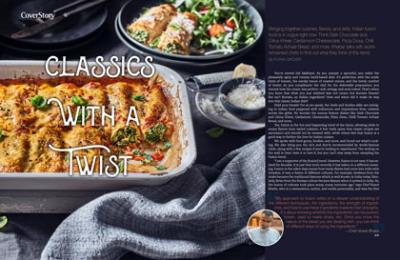
Bringing together cuisines, flavors, and skills, Indian fusion food is in vogue right now. Think Dark Chocolate and Citrus Kheer, Cardamom Cheesecake, Pizza Dosa, Chilli Tomato Achaar Bread, and more. Khabar talks with world renowned chefs to find out what they think of this trend.
You’re served Dal Makhani. As you sample a spoonful, you relish the pleasantly spicy and creamy lentil-based dish. It’s perfection with the acidic hints of tomato, the smoky traces of roasted onions, and the lovely comfort of butter. As you compliment the chef for the delectable preparation, you remark how the cream was perfect—soft, stringy, and semi-sweet. That’s when you learn that what you just relished was not cream, but Burrata Cheese! But isn’t Burrata, an Italian ingredient? How and when did it make its way into this classic Indian dish?
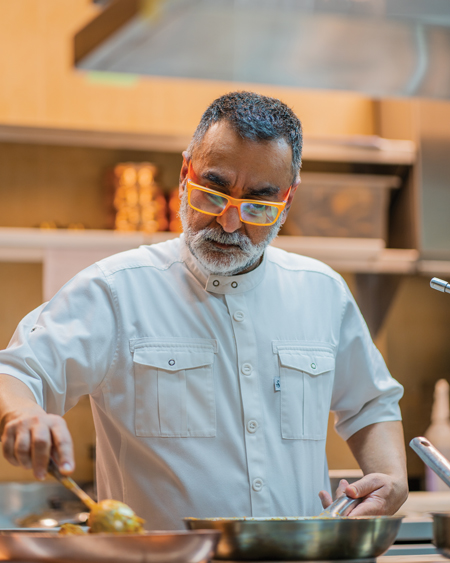 “My approach to fusion relies on a deeper understanding of the different techniques, the ingredients, the strength of ingredients, and how to use these ingredients towards their strengths. It’s about knowing whether the ingredients can be pureed, frozen, used to make drops, etc. Once you know the nature of the beast you are dealing with, you can think of different ways of using the ingredients.”
“My approach to fusion relies on a deeper understanding of the different techniques, the ingredients, the strength of ingredients, and how to use these ingredients towards their strengths. It’s about knowing whether the ingredients can be pureed, frozen, used to make drops, etc. Once you know the nature of the beast you are dealing with, you can think of different ways of using the ingredients.”
—Chef Vineet Bhatia
Hold your breath! For as we speak, the chefs and foodies alike are indulging in Indian food peppered with influences and inspirations from cuisines across the globe. No wonder the menus feature dishes like Dark Chocolate and Citrus Kheer, Cardamom Cheesecake, Pizza Dosa, Chilli Tomato Achaar Bread, and more.
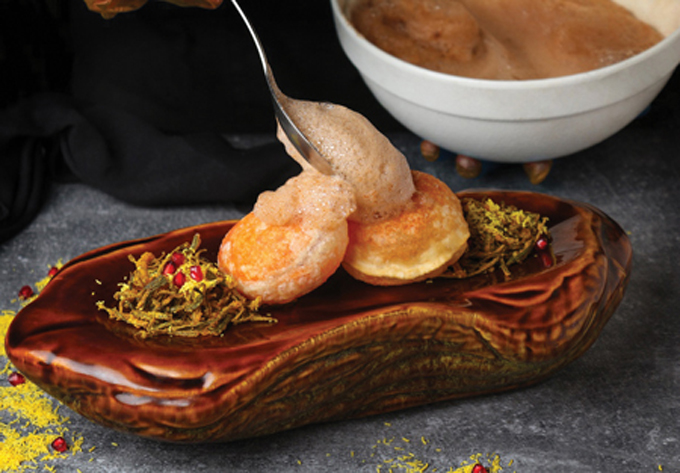
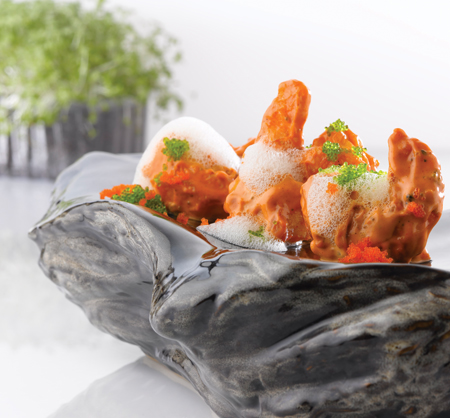
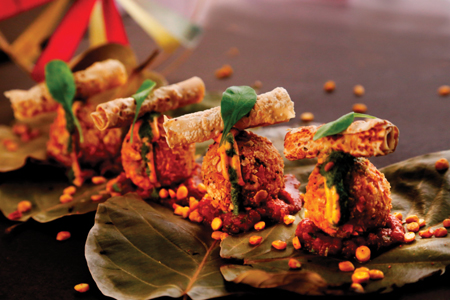
Yes, fusion is the hot and happening trend of the times, allowing chefs to marry flavors from varied cuisines. A few chefs opine that classic recipes are sacrosanct and should not be messed with, while others feel that fusion is a good way to further the love for Indian cuisine.
We spoke with food gurus, foodies, and more; and found out what’s cooking. We also bring you the do’s and don’ts recommended by world-famous chefs, along with a few recipes if you’re looking to experiment. The writing on the wall is clear: hate it or love it, but you can’t stay away from sampling the fusion trend.
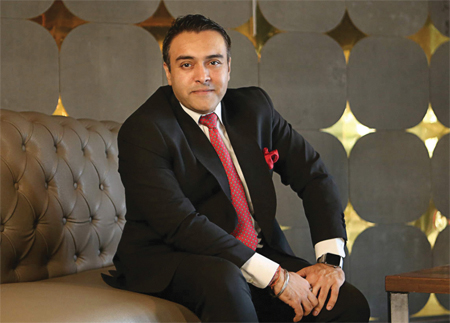 “It is important to have subtlety and restraint to pay homage to the authenticity of the dish. The flavors of the dish must be respected by both cuisines; and if there is an ingredient that is typically not used in any of the cuisines, then it is important to show it respect by combining the flavors of both, the best aspects and techniques of both. Modern Indian fusion food is a good phenomenon that is now taking over the world and is here to stay as long as the term stands for authenticity and respect to the host cuisines; and lends itself to creating a dish that is better than some of its parts.”
“It is important to have subtlety and restraint to pay homage to the authenticity of the dish. The flavors of the dish must be respected by both cuisines; and if there is an ingredient that is typically not used in any of the cuisines, then it is important to show it respect by combining the flavors of both, the best aspects and techniques of both. Modern Indian fusion food is a good phenomenon that is now taking over the world and is here to stay as long as the term stands for authenticity and respect to the host cuisines; and lends itself to creating a dish that is better than some of its parts.”
—Zorawar Kalra, Founder & Manager Director, Massive Restaurants
“I am a supporter of the [fusion] trend. However, fusion is not new; it has existed for decades. It is just that more recently, it has taken on a different meaning. Fusion in the olden days meant how many dishes had come into India with invaders. It was a fusion of different cultures. For example, Sambusa from the Arabs became the traditional Samosa which is well known in India today. Similarly, Birian from the Persian culture became Biryani when it arrived in India. So, the fusion of cultures took place many, many centuries ago,” says Chef Vineet Bhatia, who is a restaurateur, author, and media personality; and was the first Indian chef to be awarded a Michelin star.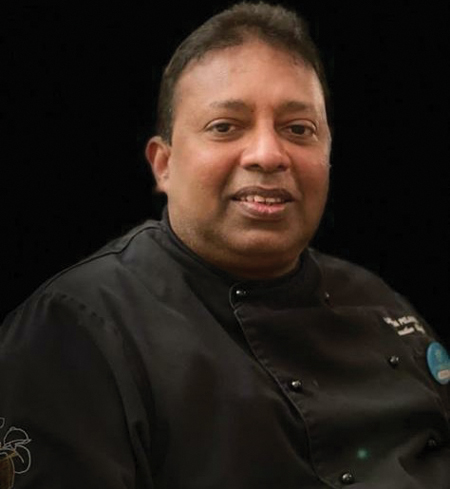
“I am a true supporter of fusion food. Fusion cuisine has the ability to take you through a mysterious journey into a world of exotic taste perceptions. The top three cuisines, that I believe, gel well with Indian cuisines are Mexican, Italian, and Maldivian (Dhivehi).”
—Laxman Pallewatte, Executive Chef, Adaaran Select Meedhupparu
Agrees Zorawar Kalra, Founder and Managing Director, Massive Restaurants, the business venture which owns brands like Masala Library, Pa Pa Ya, Farzi Café, Made in Punjab, and ShangHigh. Says he, “I think it’s a fabulous initiative to combine the best techniques of Indian food and combine it with ingredients and techniques of other cuisines.” Son of Jiggs Kalra, the “Czar of Indian Cuisine,” Zorawar Kalra has also hosted the season five of MasterChef India. He is a big proponent of the trend, which is what Farzi Café has been doing for a while. The brand now represents Indian food in nine countries across the globe. He shares how his favorite fusion Indian meal has to be at Farzi Café London, “It was a truly unique experience as we had access to the world’s best ingredients, and we were able to create a menu that was true to our vision.”
Laxman Pallewatte, Executive Chef at Adaaran Select Meedhupparu, Maldives, shared that his favorite Indian fusion dish is Braised Masala Lamb Shank. He adds, “Let your creativity fly, there are no barriers whatsoever when it comes to creating a fusion Indian meal.”
A thumbs-up from the food guru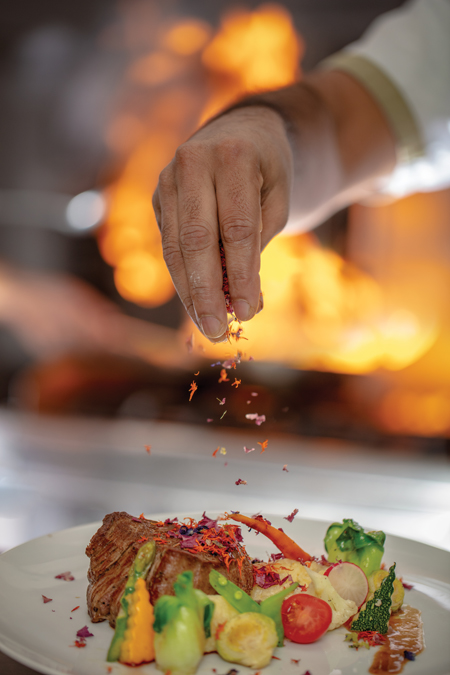
Chef Bhatia reiterates how fusion has always been around in India but it’s now—in this new social media world—that it has taken on a different meaning, “I am a supporter of fusion and how it exists on different platforms, by fusing different cultures. Even from within India, there is fusion as the dishes and cuisines from the North to the South have such varied cooking techniques and ingredients. Fusion often leads to creating very interesting flavors and combinations, and so why not.”
Chef Nishant Choubey, Consultant Chef for India Gate, shares how he loves to see fusion in Indian meals. What he dislikes the most, though, is when people tend to experiment too much which creates confusion. He is quick to add, “For instance, spaghetti cannot be served with Mutton Rogan Josh. However, what we can do mindfully is spice it up or do a progressive presentation incorporating spaghetti on top of Mutton Rogan Josh. The gravy should individually be served with Indian bread to maintain essence, and not with Italian pasta.”
As Chief Content Producer of Slurrp from HT Media Labs, which is an exclusive foods and beverages website, Ayandrali Dutta spends most of her time either exploring food, teaching, or cooking up a storm in her kitchen. She also is in favor of the fusion trend, but sounds a note of caution, “As long you don’t kill the dish and don’t experiment purely for the sake of it. Fusion dishes require extreme understanding and sensibility of the cuisines you wish to play with. Also, let’s say that fusion has always been there, but how you blend the elements is the trick.”
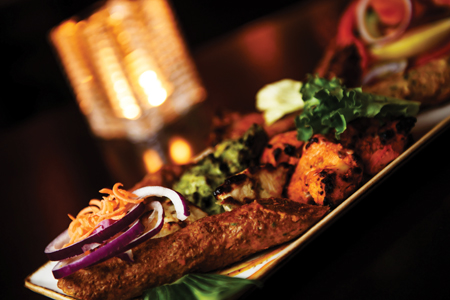
It can leave a bad taste too
Kalra suggests moderation in the way we use the word fusion. Says he, “I’m a big proponent of modern Indian food, though I’m not a big fan of the word ‘fusion’ as sometimes, it is poorly represented and does not pay homage to either of the cuisines it is trying to represent. In that sense, I think fusion should avoid confusion. I have disliked many fusion meals as there are restaurants where fusion converts into confusion.”
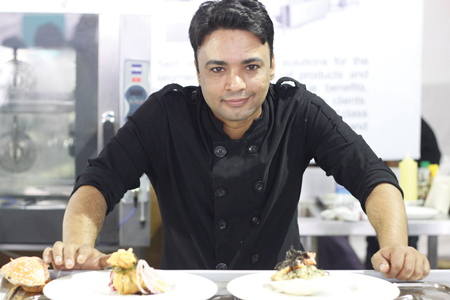
“I am a supporter of good food. Fusing different cuisines can be successful and exciting, but it is also more noticeable if you get it wrong. It tends to irk people who are in the trade. As much as it is trendy, it also has its pros and cons; and one should develop the art before blindly attempting it. I do vouch for progression, but within boundaries so that it’s meaningful and exciting.”
—Chef Nishant Choubey, Consultant Chef,
India Gate
Chef Sandeep Ail, Brand Chef of Punjab Grill, UAE agrees. He points out how many videos online showcase fusion meals as regular dishes topped with a bucket of grated cheddar cheese. He says, “This tends to be a pet peeve. It doesn’t qualify as fusion but seems to be promoted heavily by foodies and influencers. So, a dosa topped with cheese or stuffed with noodles, or serving dishes with liquid nitrogen just for the theatrics, are just that—all smoke and mirrors!”
The Internet is flooded with so-called fusion recipes and Dutta is of the opinion that a few of them should not even exist, forget being added to menus! The ones that top her list of disliked dishes include Momo Ice cream, Chowmein Gol Gappa, Cheese Pani Puri, Chocolate Pulav, Masala Dosa Ice Cream, and Dal Makhani Fondue.
Chef Bhatia too claims to have had some horrible experiences which, he feels, have been a result of the chef trying to be different and jumping on to the fusion bandwagon without understanding the basic principles of different cooking techniques and flavor combinations. He shares, “I have had some bad Indian fusion meals, but equally, I’ve had really unique and fantastic meals that show the depth and understanding that the chef has as well as the execution of the different culinary techniques.”
Kalra adds, “Fusion food is a delicate art, one that should involve subtlety and balance. In the absence of that, one would be face-to-face with a confused dish that sometimes does not pay homage to either of the cuisines it is trying to represent.”
Tread carefully
So, what’s the one golden rule that one should never flout when it comes to creating a fusion Indian meal? “One should be careful in ensuring that the sanctity of the dish should not change. Before attempting fusion cooking, be thoroughly well-versed with basic cooking. Whether it is fusion or no fusion, basics won’t change. While creativity and artistry are wonderful concepts, they must be adjusted to suit the circumstances,” suggests Chef Choubey. He adds how it is a fact that certain ingredients require to be cooked in a certain way at controlled temperatures for a set duration, and that should not be tampered with, “My advice would be to work on the presentation to evolve the dish.”
“In the name of fusion, don’t create anything and everything. It’s about keeping the basics of cooking in mind. Ask yourself if the two ingredients can be married or not?” warns Dutta. She recommends how one could study the work of Chef Manish Mehrotra who has earned the title of the most exciting modern Indian chef in the world today. Mehrotra is the man behind Indian Accent, the only Indian restaurant to feature in the World’s 50 Best Restaurants 2015 list. He is known to infuse Indian food with French, Thai, Malaysian, and Japanese hues.
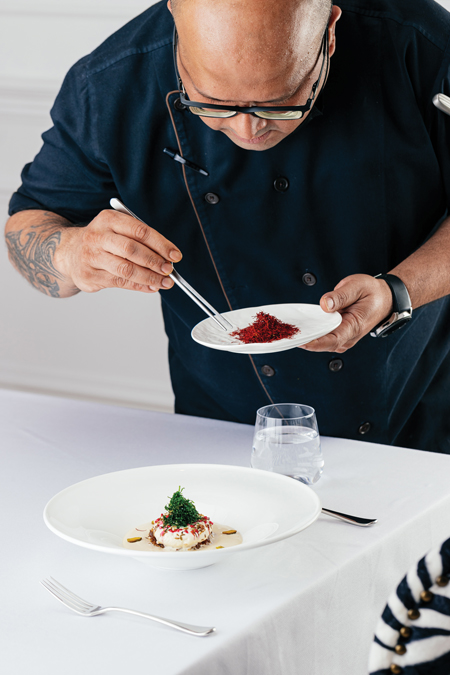
“I support the trend. There is a great need for Indian cuisine to be researched and represented with integrity. Chasing modern trends and ingredients will only make us forget our rich culinary heritage. I believe that we can use modern culinary techniques and food science to better represent Indian cuisine and elevate it to the same level as French or Japanese cuisine.”
—Chef Sandeep Ail, Brand Chef, Punjab Grill, UAE
Chef Ail suggests that the easiest way to gain an understanding of which cuisines go well with Indian food when it comes to fusion is to go back, tour the history, and check the trade routes that passed through India. He adds, “For example, the Portuguese and the British spent time in our country, and brought and took ingredients from our country and South-East Asian countries like Thailand and Malaysia where our forefathers have traveled. The cuisine and ingredients in these countries will always have common factors and can be easily interchanged.”
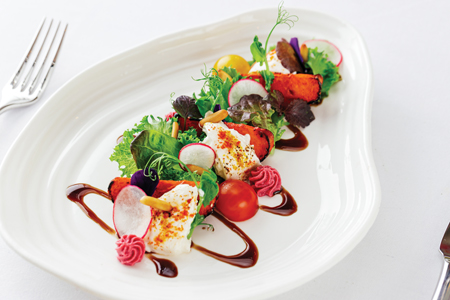
Ask Chef Choubey to pick his three favorite partners and he goes for Mexican, Thai, and Turkish; whilst Dutta vouches for French, British, and Mughlai. Kalra thinks that Indian food is extremely malleable and as a result, it goes well with most cuisines around the world, “I definitely think that it goes extremely well with Italian and Mexican; and even when you use delicate nuances of South American or Japanese food, it can also pair itself well.”
Chef Bhatia says that, at the same time, one shouldn’t always stick to rules because rules are also meant to be broken, “For example, lentils are not only meant for making the obvious lentil soup, but can also be used to make a sauce or a puree.” He adds that it all depends on one’s knowledge of how to treat a particular ingredient, which can lead to different ways of using it. It can also give you a greater understanding of the product, so you need to treat it well and use it accordingly.
Want to experiment with fusion?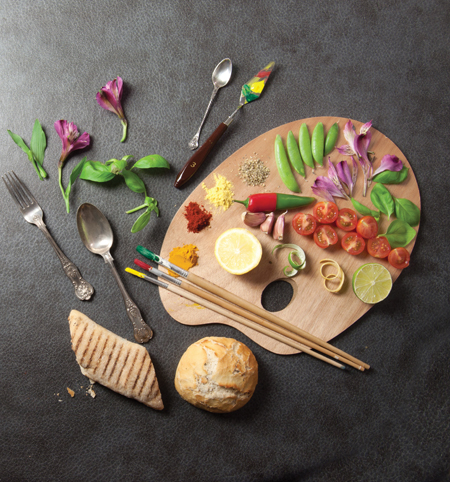
Keep these tips in mind, says Chef Vineet Bhatia
- It’s very much like a color palette. You can divide colors according to the shades of warmth or pastel shades and you keep it in the same tones. For example, you may keep all the colors in the warmer belt, which can then be mixed together.
- This is very similar for the flavor profile too. So if you go with the same flavor profile such as Mediterranean, Italian, etc., these will all work well together as opposed to cold food merging with Indian food as Indian food is quite complex in terms of its depth and flavors and cooking techniques.
- Something robust or equally as robust would match up very well such as Italian, Mexican, Mediterranean, and Spanish when infused with Indian.
Besan Halwa Mousse with Coconut Pancake
Recipe Courtesy: Chef Nishant Choubey, Consultant Chef, India Gate
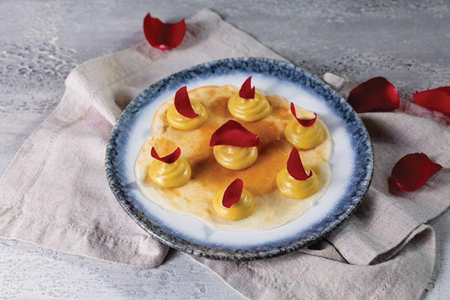
Ingredients
For Besan Halwa
- Besan 50 g
- Coconut Oil 50 g
- Coconut Milk 500 ml
- Sugar 200 g
- Green Cardamom Powder 1/4 tsp
- Coconut Cream 30 ml
For Coconut Pancake
- Coconut Milk 500 ml
- Coconut Milk Powder 30 g
- Sugar 30 g
- Flour 50 g
- Baking Powder 1 tsp
- Butter 2 tbsp
- Fresh organic rose petals for garnish
Method
For Besan Halwa
- Take a nonstick pan or a skillet. Heat the pan and add besan.
- Cook for 5 minutes, and then add coconut milk and sugar.
- Finish it with green cardamom and let it sit at room temperature for 15 minutes.
- Add whipped coconut cream and mix well to convert it into a light mousse.
For Coconut Pancake
- Mix flour with coconut milk powder, sugar, coconut milk powder, baking powder and let it ferment for an hour.
- Heat a skillet and add butter.
- Portion out the pancake batter through a ladle and cook it from both sides.
To Serve
- Fill up the besan halwa mousse in a piping bag and very swiftly ooze it out on the pancakes and garnish it with fresh organic rose petals.
Baked Rashogulla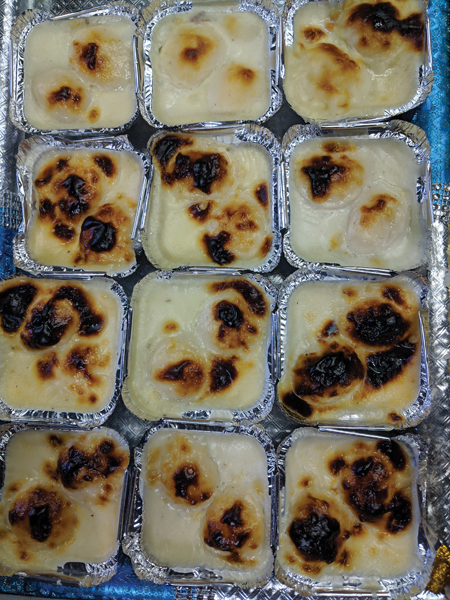
Recipe Courtesy: Ayandrali Dutta
Ingredients
- Rashogulla 12 pieces
- Milk 1 cup
- Condensed Milk 200 g
- Khoya 50 g
- Cardamom Powder 1/4 tsp
Method
- Either you can buy the readymade Rashogullas or make them from scratch.
- One at a time, squeeze the sugar syrup out of the Rasho-gullas and place them in a baking dish.
- Heat milk in a thick-bottomed pan.
- Once it starts boiling, add the khoya.
- Once it dissolves, add the condensed milk and keep stirring. Cook until it turns into a thick consistency.
- Pour that over the mixture and sprinkle cardamom powder.
- Then, bake it for around 6-7 mins at around 200 degrees or just until the top layer starts to turn brown.
To serve
- Once ready, garnish with some nuts. Serve either hot or cold.
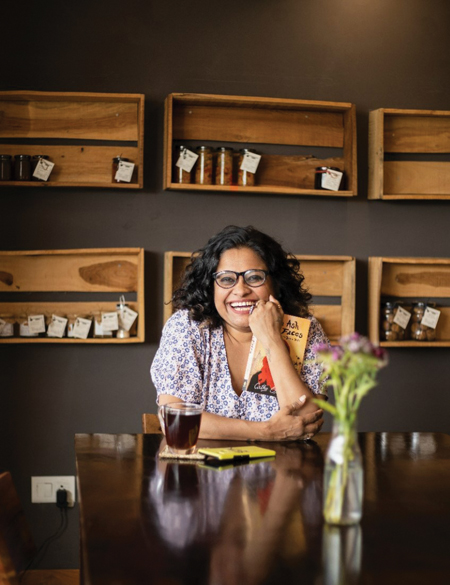
Purva Grover is an author, journalist, poet, playwright, and stage director. A postgraduate in mass communication and literature, she is the founder-editor of The Indian Trumpet, a digital magazine for Indian expats in the UAE. Meet her at www.purvagrover.com or say hello to her on Instagram @purvagr. She can be reached at grover.purva@gmail.com.
Enjoyed reading Khabar magazine? Subscribe to Khabar and get a full digital copy of this Indian-American community magazine.
blog comments powered by Disqus










